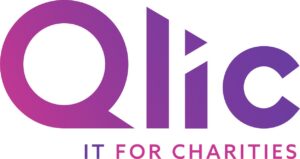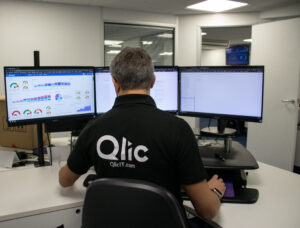It’s no secret that legacy technology can be both a comfort and a curse, serving as a testament to an organisation’s long-standing mission while simultaneously hindering its ability to adapt and grow in the digital age.
Let’s explore the critical importance of addressing and updating these antiquated systems. This process ensures your nonprofit can continue to fulfil its mission effectively and efficiently in an ever-evolving technological landscape. Discover in-depth insights into identifying legacy systems, understanding the risks and limitations they impose, and the reasons why this transformation is crucial for your nonprofit’s success.
Recognising the problem of having legacy technology is only the start. That’s why this blog aims to provide valuable insights and highlight tangible strategies and solutions to overcome the challenges associated with legacy technology. From practical advice on budgeting for tech upgrades to tips on fostering a culture of innovation within your team, we’ll arm you with the tools you need to navigate this complex journey.
What is Legacy Technology?
Legacy technology refers to outdated computer systems, software, or applications that an organisation still uses despite the availability of newer, more efficient alternatives. This prevalence within the nonprofit sector is not a rarity but rather a common scenario due to budget constraints, familiarity, and the daunting task of transitioning to new systems.
Nonprofit organisations frequently rely on legacy systems for their critical day-to-day operations, ranging from donor management to financial accounting. These outdated systems pose significant challenges due to their incompatibility with modern technologies, heightened vulnerability to security threats and increasing maintenance and operational costs. Examples of legacy technology within nonprofits might include an old database that manages donor information or outdated fundraising software that no longer integrates with new digital payment methods.
The characteristics of legacy systems in nonprofit organisations are notably marked by their lack of support, difficulty in integrating new technologies and the high costs associated with updates or maintenance. Despite these challenges, the rooted reliance on such systems is a testament to their critical role in the organisational workflow, making the conversation around updating and managing legacy technology not just relevant but essential for the efficiency of nonprofits in their mission.
Exploring the Impact of Legacy Technology
Legacy technology poses a unique set of risks and challenges that can hinder a nonprofit’s mission and operations. Even though these systems may have served well in the past, their continued use in a rapidly evolving digital world can have several negative implications for organisations. Such as:
- Reduced Efficiency and Productivity
- Increased Maintenance Costs
- Security Vulnerabilities and Compliance Risks
- Limited Integration Capabilities with Modern Systems
- Inhibited Innovation and Growth Opportunities
Let’s delve into each of these a little further:
Reduced Efficiency and Productivity:
A legacy system’s outdated interfaces and processes can drastically slow down operations. This increases time and resources spent on tasks that could otherwise be streamlined with more modern solutions.
Increased Maintenance Costs:
As older technology becomes obsolete, the cost of maintaining these systems increases. Specialists familiar with older technologies are becoming short, driving up the price of their services.
Security Vulnerabilities and Compliance Risks:
Legacy systems often lack the security features needed to defend against modern cyber threats. This makes nonprofits vulnerable to charity cyber attacks.
Limited Integration Capabilities with Modern Systems:
One of the most significant drawbacks of legacy technology is its inability to integrate smoothly with newer, more efficient tools and platforms. This leads to siloed data and operations.
Inhibited Innovation and Growth Opportunities:
Reliance on outdated technology can impact an organisation’s ability to innovate and grow. Modern challenges require modern solutions, and legacy systems often cannot support new initiatives or adapt to changing needs.

Strategies for Managing Nonprofit Legacy Technology
For nonprofits using and looking to update outdated legacy technology, strategic planning and effective management of this process is essential. Here are some of the key steps for managing it:
Step 1: Assessing Your Technology Landscape
Inventory:
Identify all legacy systems in use, noting their functions, limitations and any issues.
Functionality Evaluation:
Assess how well these systems meet your operational needs and goals, focusing on reliability and scalability.
Dependency Analysis:
Map out how legacy systems interconnect with other processes, highlighting potential impacts of updates on organisational functions.
Step 2: Creating a Modernisation Roadmap
Prioritisation:
Determine which systems need urgent updates based on operational importance and risk factors.
Adopting Phased Approach:
Implement updates in manageable phases and start with the most critical systems to minimise operational disruptions.
Timelines and Milestones:
Set realistic goals and timelines for each phase, ensuring progress is measurable and achievable.
Step 3: Budgeting and Funding
Financial Assessment:
Evaluate available resources and identify potential funding gaps for the modernisation project.
Cost Estimation:
Understand the financial implications, considering seeking advice for a tailored cost assessment.
Cost-saving Strategies:
Explore grants and cost-saving opportunities, such as Microsoft grants for nonprofits, to help mitigate expenses and make new tech solutions more cost effective.
This streamlined approach enables nonprofits to effectively navigate the complexities of modernising legacy technology, ensuring systems are aligned with their mission-critical operations.
Leveraging Technology for Nonprofit Legacy Modernisation
Nonprofits are increasingly turning to technology to modernise their legacy systems, with the adoption of solutions like Microsoft 365, a suite of tools designed to boost productivity, collaboration and communication. The top 5 benefits of Microsoft 365 for charities highlight its significance in facilitating seamless operations, from improved data accessibility to advanced security features. The journey towards modernisation often involves a Microsoft 365 migration, a pivotal step that enables charities to leverage cloud-based solutions for greater scalability and flexibility.
The transition to cloud solutions plays a crucial role in the integration of legacy systems. A strategic approach to charity cloud migration can streamline operations, reduce IT overheads and enhance data management capabilities.
Moreover, as nonprofits navigate the complexities of legacy technology transition, data security and compliance are paramount considerations. The shift towards modern IT solutions must prioritise the protection of sensitive information and adherence to regulatory standards. By embracing advanced security measures, nonprofits can safeguard their data and ensure compliance.
The journey towards legacy modernisation for nonprofits encompasses the strategic adoption of key technologies such as Microsoft 365, cloud solutions, as well as data security and compliance. These steps enhance operational efficiency and position nonprofits to better serve their communities in the digital age.

Overcoming Common Pitfalls in Nonprofit Legacy Technology Upgrades
Upgrading legacy technology in nonprofit organisations can often present challenges and pitfalls. Successfully navigating these obstacles requires a strategic approach to change management, risk mitigation, and operational continuity.
The first hurdle in legacy technology upgrades is often resistance from within the organisation. To overcome this, it’s crucial to:
- Understand Stakeholder concerns
- Communicate the vision
- Providing training and support
Understand stakeholder concerns:
Engage with staff, stakeholders and nonprofit leaders early to identify objections. This understanding allows for tailored communication strategies that address specific worries.
Communicate the vision:
Articulate the benefits of the upgrade, such as improved efficiency, enhanced security and better service delivery.
Provide training and support:
Offer comprehensive training sessions and resources to ease the transition. This will reassure stakeholders and reduce anxiety about new systems.
Upgrading legacy systems carries inherent risks, from data loss to system downtime. Partnering with an experienced supplier can significantly mitigate these risks. Key strategies include:
- Data Migration planning
- Backup and Disaster Recovering Planning
- Contingency Planning
Data migration planning:
Detailed planning ensures that all critical data is accurately and securely transferred to the new system.
Backup and disaster recovery planning:
Establishing robust backup and disaster recovery plans protects against data loss in the event of a migration issue.
Contingency planning:
Having a clear contingency plan can address unforeseen challenges and minimise disruption.
Selecting a supplier like our team at Qlic IT can help alleviate common concerns associated with legacy updates, such as data security, system compatibility and support.
Maintaining operational continuity during the upgrade process is paramount. To achieve this, consider:
- Engaging with experienced suppliers
- Adopting a phased implementation
Engaging with experienced suppliers:
Suppliers with specialised experience in nonprofit technology upgrades, such as Qlic IT. We can offer advanced support services ensuring a smooth transition with minimal downtime.
Phased implementation:
Adopting a phased approach to system migration can help maintain continuity and allow for testing new systems without disrupting ongoing operations.
By addressing these common pitfalls with thoughtful strategies and expert partnerships, nonprofits can successfully navigate the complexities of legacy technology upgrades. This ensures a future-proofed infrastructure that enhances their capacity to fulfil their missions.
Future-Proofing Your Nonprofit with Modern Technology Solutions
It’s imperative to future-proof your organisation to thrive amidst change. Embracing new technology not only addresses current operational inefficiencies but also paves the way for sustainable growth and success in an unpredictable future.
Embracing Agile and Scalable Technologies
Adopting agile methodologies and scalable technology solutions makes nonprofits more flexible and responsive. For instance, cloud-based platforms and collaborative tools like Microsoft Teams enable increased efficiency and collaboration in a flexible work environment. This supports the current trend towards remote and hybrid work.
Building a Culture of Innovation
The transition to modern technology is as much about adopting new tools as it is about cultivating a culture of innovation. By maintaining up-to-date technology, nonprofits can foster an environment where creativity, experimentation and collaboration are at the forefront. This encourages continuous improvement and allows organisations to adapt to new challenges and opportunities. For example, data analytics tools can uncover insights to inform strategic decisions.
A proactive approach to technology adoption ensures that nonprofits are not just reacting to immediate challenges but are prepared to seize future opportunities. This readiness is crucial for long-term sustainability and impact, enabling nonprofits to navigate the complexities of the modern world with confidence and agility.

Final Thoughts: Safeguarding Your Charity Against Phishing Scams
Modernising legacy technology in nonprofit organisations is crucial. Modernisation is essential for organisational resilience and growth. Transitioning to modern, flexible technologies is a strategic move that enhances efficiency, security, and innovation.
The journey of updating legacy systems is a strategic investment that is vital for amplifying impact and ensuring longevity. By prioritising technology modernisation and embracing the shift towards a more innovative and agile operation, nonprofits can secure their place in a rapidly evolving landscape, prepared to serve their communities more effectively than ever before.
Would your charity like to find out more about updating legacy technology in line with your organisation’s needs? Book your FREE Consultation with our IT experts at Qlic by clicking the button below.






